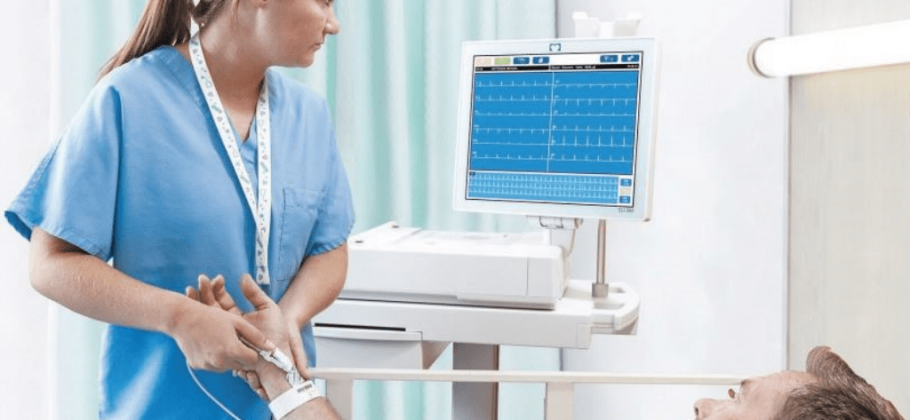According to the Royal College of Nursing an integrated electronic care system can have benefits for both patients and caregivers alike. With a single, comprehensive electronic health record system, patients can be confident that high quality, accurate data is available to their clinician, wherever they access healthcare (1).Investment in wirelessly connected devices that transmit tests to electronic patient records can improve clinical workflow, reduce admin burdens and enhance accuracy of patient data in order to improve patient safety(2).
As part of a wider project to replace the aging technology in the cardiology department at the Antrim Area Hospital, Northern Ireland; investment was made in five Welch-Allyn ELI380 ECG machines that could connect to the hospital’s existing electronic systems. The devices were equipped to wirelessly transfer results to the hospital’s Cardio Vascular Information System (CVIS) and onto the Northern Ireland Electronic Care Record (NIECR)(3).
Data integrity is a key patient safety issue, as possible implications of data inaccuracy can include delayed or missed diagnoses or incorrect treatment, which puts caregivers at risk of patient harm. In a 2015 report of 7,149 cases in which communication failures contributed to patient harm; 12% of these were estimated to be as a result of poor documentation, including breakdowns in documentation timing, accuracy and legibility (4).
When Welch-Allyn electrocardiographs were introduced at Antrim Hospital, instances of data inaccuracy were significantly reduced. The hospital performs around 200 ECG readings every single day, and results showed that ‘failures’ due to errors made by mistyping were virtually eliminated, reduced from around 30-40 daily to almost nothing (5).Admin burdens were also reduced, with benefits including:
- Utilisation of barcodes on patient’s wristbands, allowing patient demographics to be instantly transferred to the Patient Administration System, preventing mistyping errors.
- Turn-around time between patients was reduced, with a timesaving of around five minutes per patient, allowing staff to meet increasing demands on their service efficiently.
- Wireless data transfer to the electronic care record so consultants can access it from any location, out-of-hours. This enabled staff to seek out more senior involvement and escalate at-risk cases when necessary.
The ultimate goal of the project was to introduce fleet of advanced ECG devices which could wirelessly communicate with the existing hospital patient systems. Interopeability to existing hospital systems is key to the success of these projects, and with the expertise and experience of the Connectivity Project Management team; Hill-Rom has been able to fully connect Trusts in as little as six weeks from start to finish. This creates a platform which caregivers can use confidently from the outset.
Caregivers were keen on the devices’ ease-of-use and wireless ECG patient cable, which eliminated trip hazards from trailing wires and enabled use of the device in space-limited areas. Sean Armstrong, head of IT networking and security commented, “The device’s use of Linux operating software makes it less susceptible to security attacks, which made connection to the hospital’s wireless network much more straightforward”.
Gavin Richards, Marketing director at Hill-Rom comments; “Hill-Rom is dedicated to developing cardiology solutions that combine Welch-Allyn’s rich heritage of pragmatic knowledge with a visionary spirit of innovation and continuous improvement. Hospitals are under increasing demands; by developing innovative solutions to improve workflow and enhance data accuracy we can ensure healthcare providers get the best value from technology and improve patient outcomes.”












